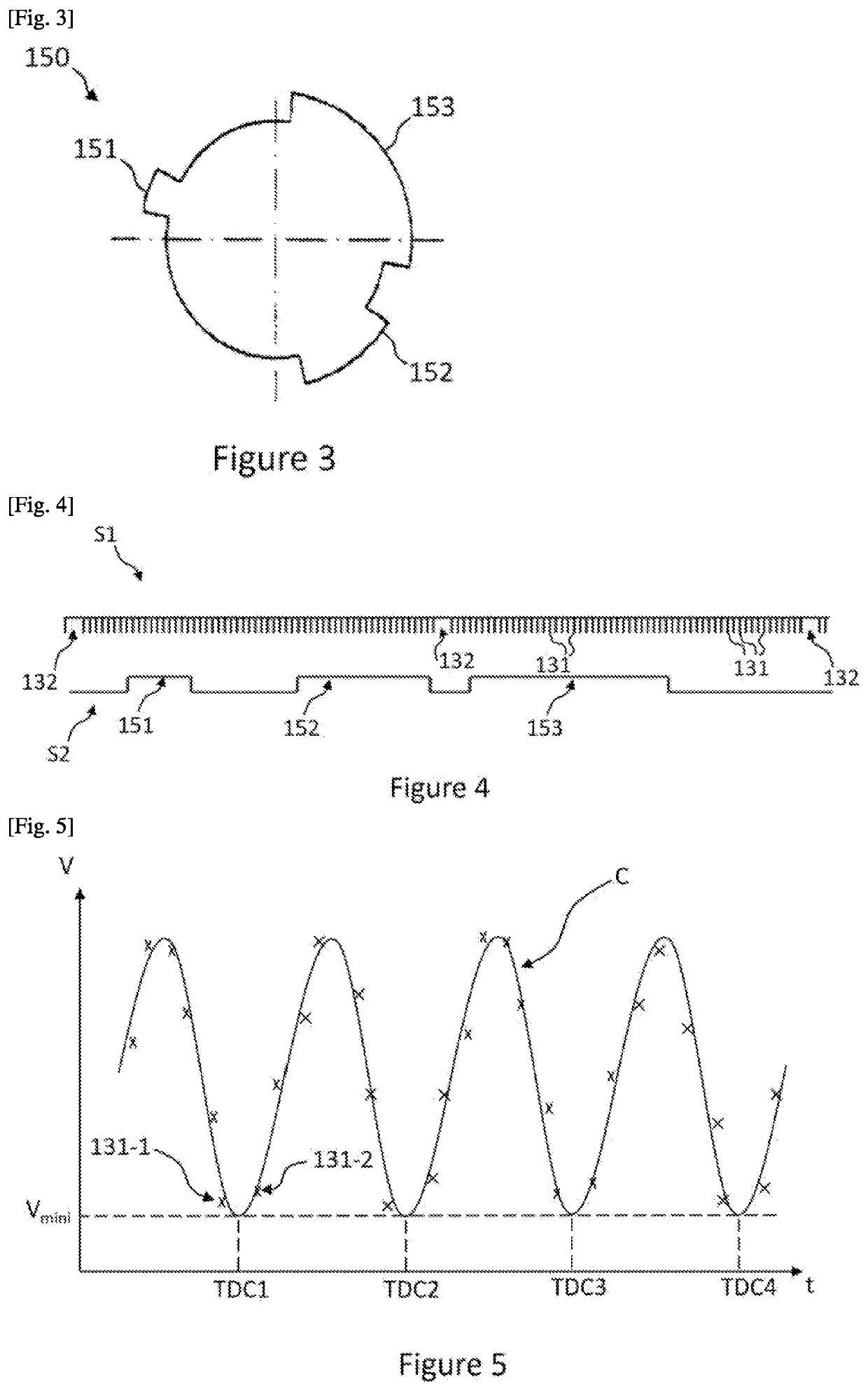Validation of a signal from a crankshaft sensor
a crankshaft sensor and signal validation technology, applied in the direction of machines/engines, electric control, instruments, etc., can solve the problems of insufficient precision of position determination, faulty signal generation of crankshaft sensors, and no longer optimal operation of engines
- Summary
- Abstract
- Description
- Claims
- Application Information
AI Technical Summary
Benefits of technology
Problems solved by technology
Method used
Image
Examples
Embodiment Construction
[0036]An aspect of the invention will be described hereafter in the light of implementation in a motor vehicle. However, any implementation in a different context, in particular for any vehicle comprising an internal combustion engine, for which the angular position needs to be determined, is also covered by an aspect of the present invention.
[0037]FIG. 1 schematically shows a side view of an internal combustion engine 10 of a motor vehicle 1. The vehicle 1 further comprises the engine 10, a computer 20.
[0038]The internal combustion engine 10 comprises, in this non-limiting example, four cylinders 11 each demarcating a combustion chamber 11A, in which a piston 12 slides, connected to a crankshaft 13 and the movement of which is driven by the compression and the expansion of the gases originating from the compression of an air and fuel mixture introduced into the combustion chambers 11A.
[0039]In this example, the engine 10 is of the four-stroke engine type. Furthermore, during operat...
PUM
 Login to View More
Login to View More Abstract
Description
Claims
Application Information
 Login to View More
Login to View More - R&D
- Intellectual Property
- Life Sciences
- Materials
- Tech Scout
- Unparalleled Data Quality
- Higher Quality Content
- 60% Fewer Hallucinations
Browse by: Latest US Patents, China's latest patents, Technical Efficacy Thesaurus, Application Domain, Technology Topic, Popular Technical Reports.
© 2025 PatSnap. All rights reserved.Legal|Privacy policy|Modern Slavery Act Transparency Statement|Sitemap|About US| Contact US: help@patsnap.com


